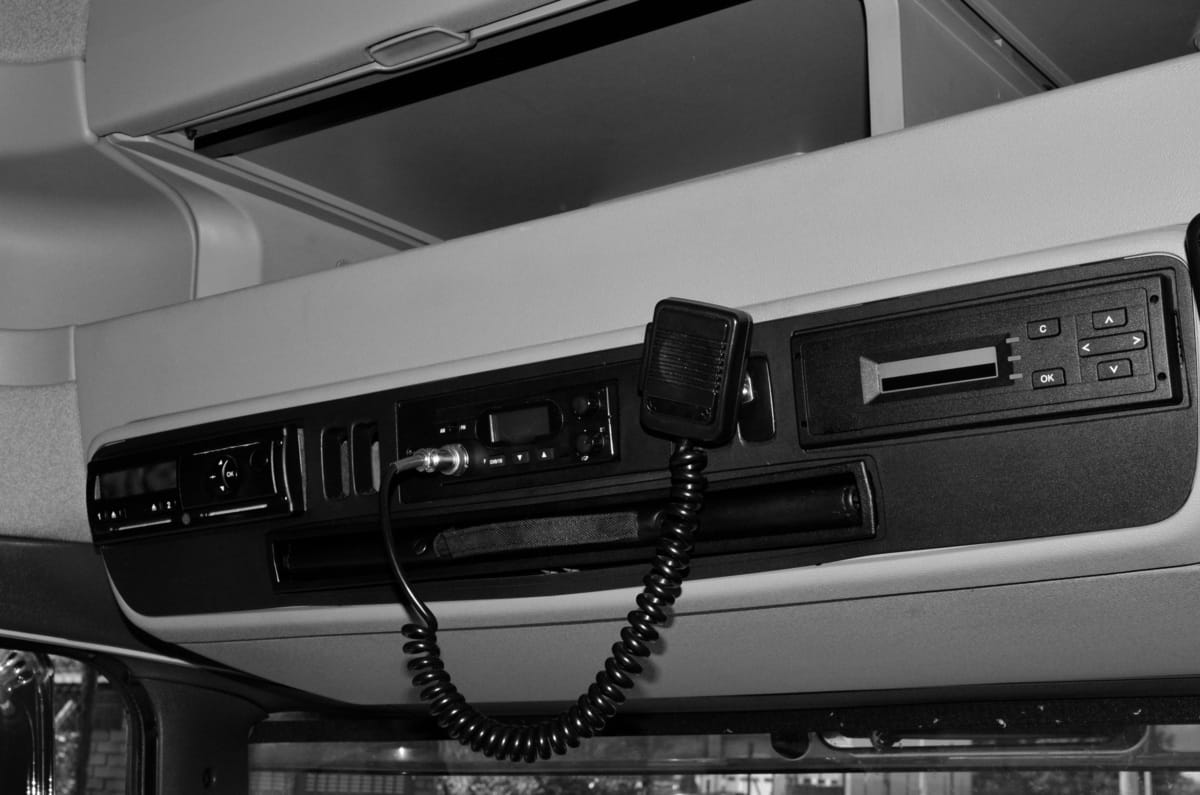
In the vast expanse of highways and byways, the trucking industry has long relied on an essential communication tool to keep drivers connected and informed – the Citizen Band (CB) radio. Born out of necessity, CB radios have played a pivotal role in shaping the landscape of long-haul trucking, enhancing safety, efficiency, and camaraderie among drivers.
The Birth of CB Radios
The origins of CB radios can be traced back to the 1940s when the U.S. Federal Communications Commission (FCC) allocated a set of 27 MHz radio frequencies for unlicensed public use. These frequencies, known as the Citizen’s Band, were initially intended for personal and business communication. However, it wasn’t until the 1960s that CB radios gained widespread popularity.
In this time, truckers started picking up CB radios as a form of communication. The glamour of CB Radios came down to the simplicity of use, their cost-effectiveness, and the being the means to transmit a message to a wide audience. CB radios have 23 channels designated for use that allowed truck drivers to share information in real time about the weather, road conditions, and law enforcement activities. This created a network of sorts that allowed for clear communication.
The first commercially available CB radio was introduced by SBE (Small Business Electronics) Corporation in 1960. They released the SBE-5 which was said to be one of the earliest radios manufactured for personal and business use. With the introduction of the SBE-5, it marked the beginning of the availability of CB radios to the general public. This fueled the adoption and popularity of CB’s in the following years. The continued improvement of CB radios were quintessential in shaping the trucking and transportation industries means of communication.
The CB Craze
Due to pop-culture in the 70’s, the CB radio craze took off. With movies like “Smokey and the Bandit” and our favorite song about convoy’s glamorizing their use, they quickly became an icon of the open road. The culture behind CB radios developed unique sland terms such as “breaker, breaker” (a general communication call) and “10-4” (an term used for ackknowledgement).
This “trucker slang” or “CB slang” developed into a distinct and colorful language. There are quite a few terms out there, here are some of the most used and recognized:
1. 10-4: Acknowledgment, meaning “affirmative” or “okay.”
2. Breaker, Breaker: A general call for other CB users to listen in or join the conversation.
3. Good Buddy: A friendly term for another CB user, often used to address fellow truckers.
4. Smokey or Bear: Refers to law enforcement, especially highway patrol officers or police officers.
5. Convoy: A group of trucks traveling together, often for mutual support and communication.
6. Double-nickel: Refers to the 55 mph speed limit.
7. Eyeball: Meeting someone in person after initially connecting on the CB radio.
8. Keep the shiny side up: A wish for a safe journey, referring to keeping the truck’s shiny side (the side without damage) facing up.
9. 10-20: Asking for someone’s location or inquiring about their current whereabouts.
10. Bear in the Air: Refers to a police aircraft or helicopter monitoring traffic.
11. Front Door or Back Door: Front door means someone is approaching you from the front, and back door means from the rear. This is often used in the context of police presence or speed traps.
12. Hammer Down: Accelerating or driving at a high speed.
13. Good Neighbor: A friendly and courteous CB user.
14. Chicken Coop: A weigh station or inspection station.
15. Flip-flop: Turnaround or go back.
These terms are part of a rich tradition of communication among truckers, adding a layer of camaraderie and shared experience on the highways. Keep in mind that the use of CB slang can vary among different regions and groups of truckers.
CB Radios Impact on the Trucking Industry
CB’s became an invaluable tool for truckers, offering a lifeline for communication over long distances where traditional means of communication were unreliable. The benefits for the trucking industry were manifold:
1. Real-Time Information: CB radios allowed truckers to share information about traffic, road conditions, and accidents in real-time, helping their fellow drivers make informed decisions and navigate challenging situations.
2. Emergency Communication: In case of emergencies or breakdowns, CB’s radios provided a direct means of communication for truckers to seek assistance or warn others of potential hazards.
3. Convoy Coordination: The concept of trucker convoys became synonymous with CB radios. Convoys facilitated better coordination among drivers, improving efficiency and safety on the road.
4. Reduced Isolation: Long hours on the road can be isolating, but CB radios fostered a sense of community among truckers. They could share stories, exchange advice, and even form friendships over the airwaves.
5. Enhanced Safety: The ability to communicate with other drivers about potential dangers, speed traps, or adverse weather conditions contributed significantly to improved safety on the highways.
Modern Adaptations
While the heyday of the CB radio craze has passed, CB radios remain a vital tool in the trucking industry. Modern truckers often supplement CB’s with other communication technologies, such as smartphones and GPS systems. However, the reliability and simplicity of CB radios continue to make them a preferred choice for many truckers.
The origin of CB radios can be traced back to a simple idea – the need for reliable communication on the open road. From their humble beginnings, CB radios have grown into an integral part of the trucking industry, fostering communication, camaraderie, and safety among long-haul truckers. As technology continues to advance, CB radios stand as a testament to the enduring importance of simple, effective communication tools in the ever-evolving world of transportation.